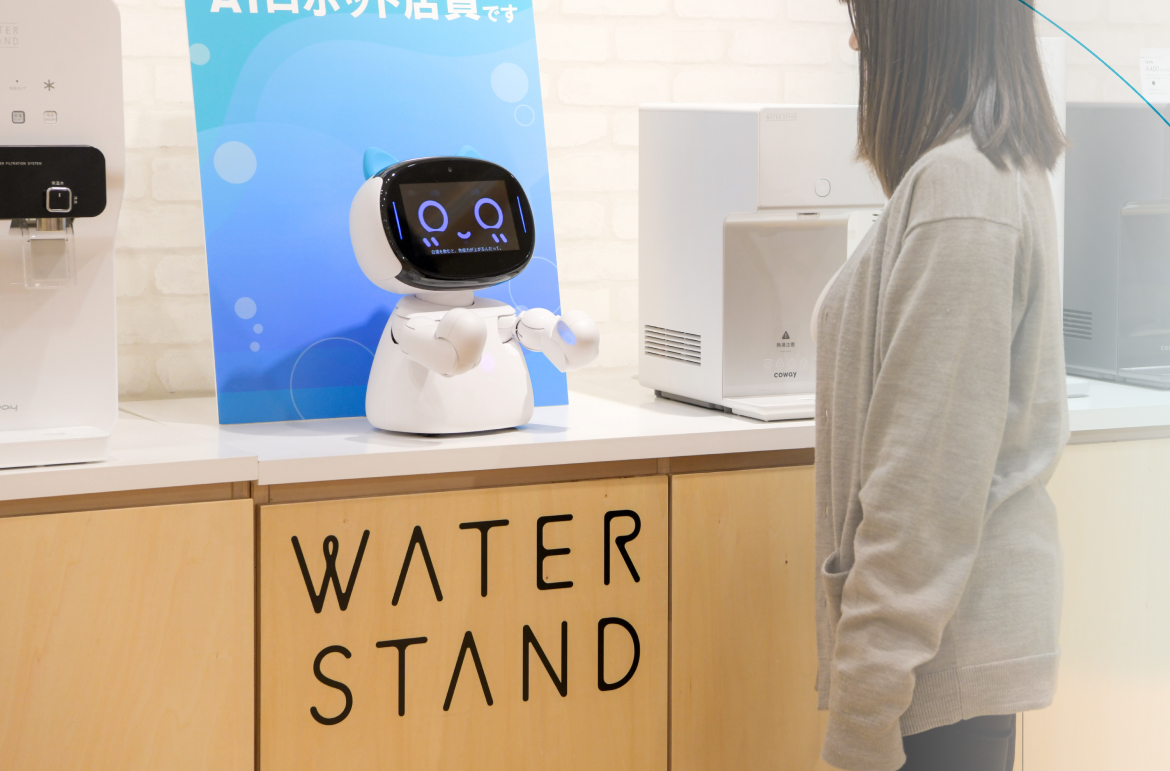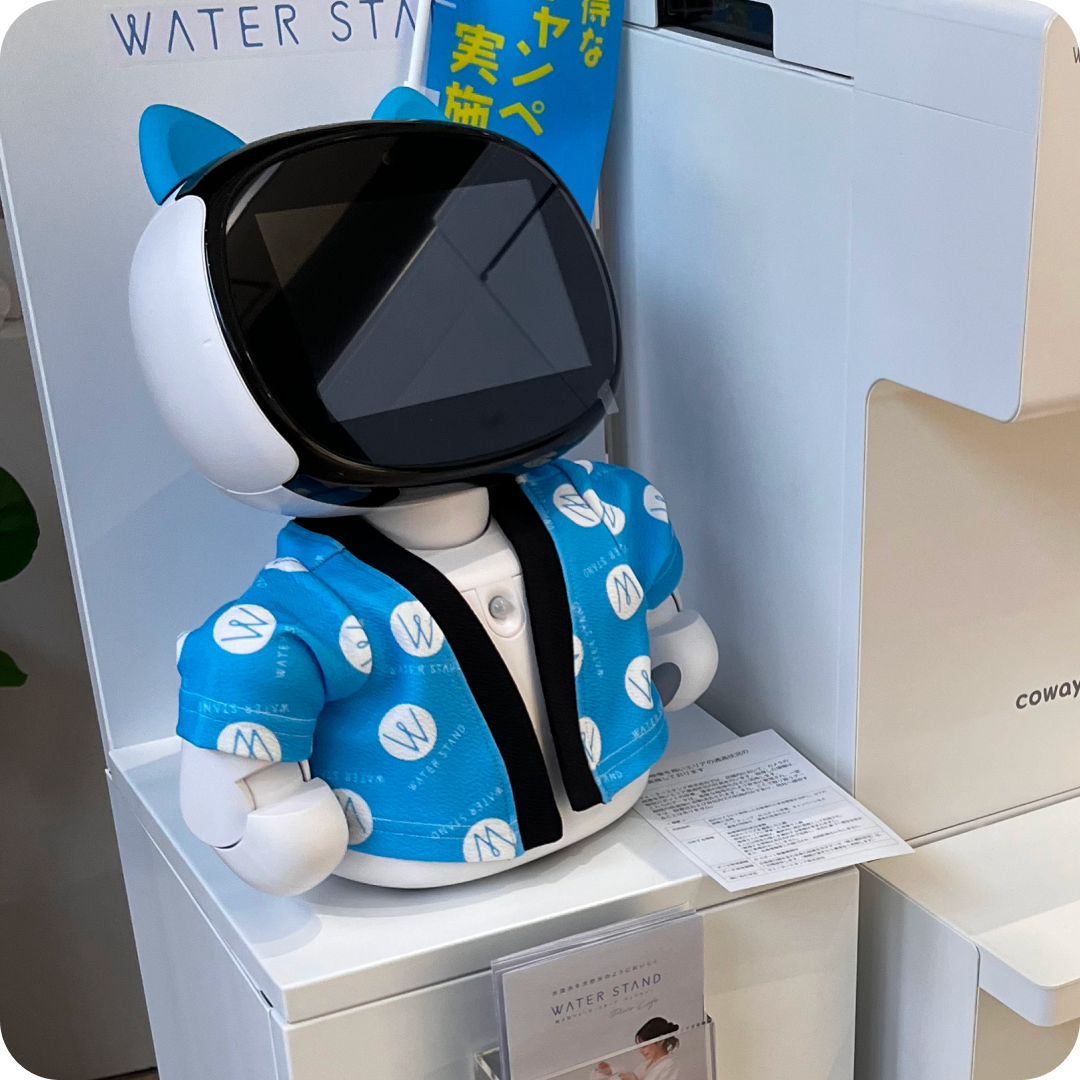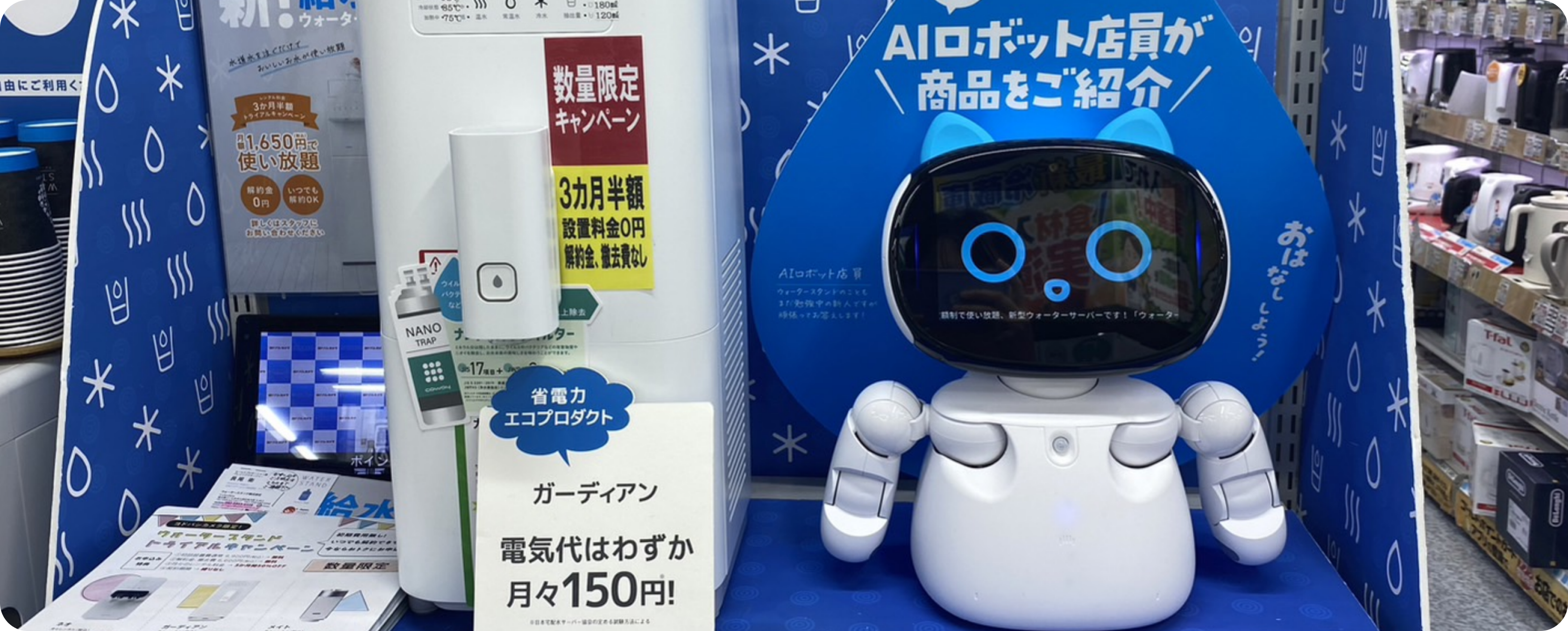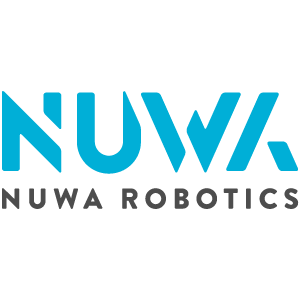

Water Stand Water Dispenser
Automatic Sales Assistant


Customer Satisfaction

Business Planning Department
The most common feedback we receive from consumers is that our product is “adorable,” “innovative,” and “engaging in conversation.” Our initial goal was to generate interest in the Kebbi robot among consumers, spark interest in our products after hearing Kebbi’s product descriptions, and ultimately achieve sales. Kebbi has successfully achieved this effect.
Customer Satisfaction
Business Planning Department
The most common feedback we receive from consumers is that our product is “adorable,” “innovative,” and “engaging in conversation.” Our initial goal was to generate interest in the Kebbi robot among consumers, spark interest in our products after hearing Kebbi’s product descriptions, and ultimately achieve sales. Kebbi has successfully achieved this effect.
Customer Profile
Water Stand originates from Saitama Prefecture, Japan, a company established in the 1970s specializing in equipment for living and office spaces. In recent years, it has launched minimalist-designed, pure water quality water dispensers, emphasizing a plastic-reduced lifestyle by reducing the use of plastic bottles. With over 75 retail outlets in Japan, it serves consumers through a monthly rental machine model.
Customers are looking for more interactive devices to gradually replace traditional screen-based customer engagement methods. Through conversational design with robots, they hope to provide timely responses to customer inquiries, making the consumer experience not only novel but also practical in conveying business messages to customers, thereby expanding sales channels.
Customer Profile
Water Stand originates from Saitama Prefecture, Japan, a company established in the 1970s specializing in equipment for living and office spaces. In recent years, it has launched minimalist-designed, pure water quality water dispensers, emphasizing a plastic-reduced lifestyle by reducing the use of plastic bottles. With over 75 retail outlets in Japan, it serves consumers through a monthly rental machine model.
Customers are looking for more interactive devices to gradually replace traditional screen-based customer engagement methods. Through conversational design with robots, they hope to provide timely responses to customer inquiries, making the consumer experience not only novel but also practical in conveying business messages to customers, thereby expanding sales channels.



Case Highlights
- Automatically introduce water dispenser features and leasing plans.
- Initiate greetings with customers in a cute manner and interact with them.
- Provide tailored service processes for different customer groups.
- Collect data post-service to track interaction frequency and conversation records.
Case Highlights
- Automatically introduce water dispenser features and leasing plans.
- Initiate greetings with customers in a cute manner and interact with them.
- Provide tailored service processes for different customer groups.
- Collect data post-service to track interaction frequency and conversation records.
Experience Sharing
Water Stand aims to leverage its years of sales experience into Kebbi robots. Therefore, NUWA recommends business owners to use the Roflow tool in the RaaS Suite solution to build robot workflows. Here are the implementation experiences shared by the business owners:
1. Setting conversation goals:
Similar to human receptionists, setting goals for interacting with customers and gradually moving towards these goals in each conversation is essential. Therefore, when applying this to AI robots, it’s crucial to have a clear focus.
2. Consider how to ask questions:
Key to facilitating customer interaction is how Kebbi poses questions. We search for words that are less likely to deviate from the main topic and predict possible customer responses, categorizing responses into several intents to connect to the next service process.
3. Extension of topics:
We need to anticipate possible deviations in conversation topics and how to bring the conversation back to the main point and align it with the actual goal. Besides verbal interaction, using visual menus in some cases is also very effective in extending topics.
4. Experimentation and adjustment:
After completing the Roflow process, we invite employees who work in the store or those familiar with customer service to conduct role-playing tests to assess the feasibility of the service process and make adjustments based on collected feedback.
5. Continuous tracking and optimization:
Based on actual conversation records in store operations, we check the degree of achieving conversation goals, conversation volume, timing of customer departure, etc., and make improvements accordingly.
Experience Sharing
Water Stand aims to leverage its years of sales experience into Kebbi robots. Therefore, NUWA recommends business owners to use the Roflow tool in the RaaS Suite solution to build robot workflows. Here are the implementation experiences shared by the business owners:
1. Setting conversation goals:
Similar to human receptionists, setting goals for interacting with customers and gradually moving towards these goals in each conversation is essential. Therefore, when applying this to AI robots, it’s crucial to have a clear focus.
2. Consider how to ask questions:
Key to facilitating customer interaction is how Kebbi poses questions. We search for words that are less likely to deviate from the main topic and predict possible customer responses, categorizing responses into several intents to connect to the next service process.
3. Extension of topics:
We need to anticipate possible deviations in conversation topics and how to bring the conversation back to the main point and align it with the actual goal. Besides verbal interaction, using visual menus in some cases is also very effective in extending topics.
4. Experimentation and Adjustment:
After completing the Roflow process, we invite employees who work in the store or those familiar with customer service to conduct role-playing tests to assess the feasibility of the service process and make adjustments based on collected feedback.
5. Continuous tracking and optimization:
Based on actual conversation records in store operations, we check the degree of achieving conversation goals, conversation volume, timing of customer departure, etc., and make improvements accordingly.

